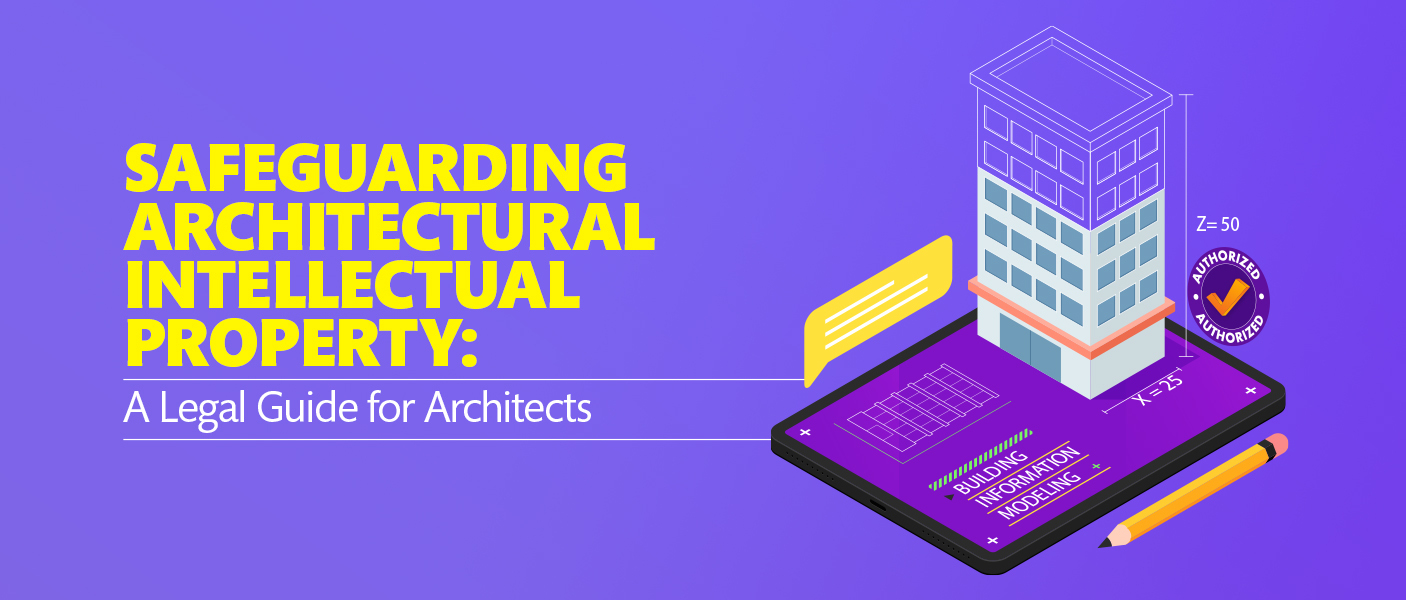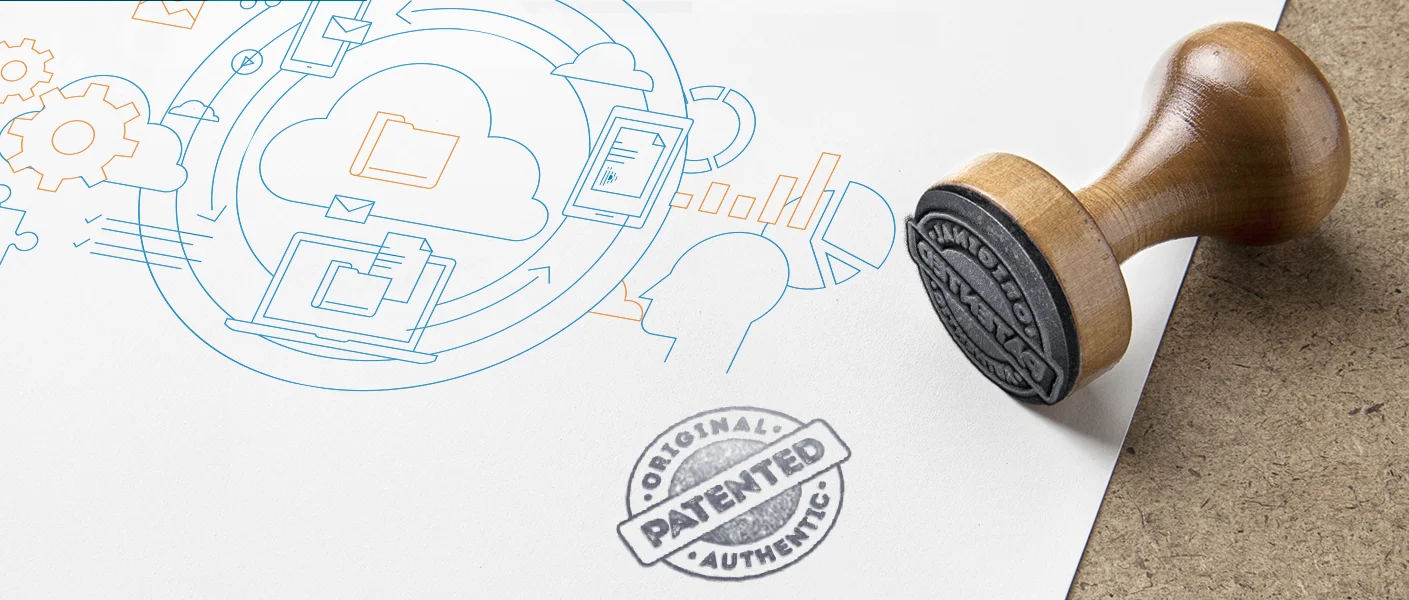Safeguarding Architectural Intellectual Property
December 30, 2023 By Khyati DaveWe all know how an architect devises a plan to build something. A lot of thought process is involved, calculations are made, and using creativity and adding uniqueness, an architect creates a map of the building to be constructed. So, don’t you think it is made with a lot of effort and must be protected? Well, yes, architectural designs or ideas do fall in the category of intellectual property and hence can and must be protected. Here’s a legal guide covering how it can be safeguarded.
Understanding Intellectual Property in Architecture
Intellectual property (IP) in architecture refers to the legal rights that protect the unique and creative elements of architectural designs and innovations. Architects create original designs, plans, and concepts that are considered intellectual property, and protecting these ideas is crucial for fostering innovation, preventing unauthorized use, and ensuring that architects and designers are recognized and rewarded for their original work.
In India, intellectual property rights related to architecture are primarily governed by various laws. Here are the key aspects to understand:
1. Architectural Copyright Protection
In Indian law, the term "work of architecture" refers to a category of creative works that is protected under copyright law. The Copyright Act of 1957, defines various categories of works eligible for copyright protection, and architectural works are considered one of these categories.
The definition of "work of architecture" in the Indian context includes the design of buildings or structures. Here are key points related to architectural works under Indian copyright law:
Definition -
Under Section 2(c) of the Copyright Act, "architectural work" means any architectural work involving an artistic design or any model of one.
Authorship -
The architect or designer is considered the author of an architectural work if they are responsible for the building's aesthetic character or design.
Protection -
Architectural works are protected as original literary works under the Copyright Act. The protection extends to the expression of ideas in the design, layout, and artistic elements of a building or structure.
Duration of Protection -
The copyright protection for architectural works lasts for the lifetime of the author plus 60 years from the beginning of the calendar year following the year in which the author dies.
Exclusive Rights -
The architectural work can only be reproduced, published, displayed, and distributed by the copyright holder (architect or designer).
Infringement -
The act of reproducing or copying architectural work without permission of its owner constitutes an infringement of copyright.
Registration -
While copyright protection is automatic, architects may choose to register their architectural works with the Copyright Office in India. Registration provides certain legal advantages, such as evidence of ownership and prima facie evidence in legal proceedings.
Exceptions -
Not every act under this law is punishable or requires the authorization of the copyright owner, certain acts such as the construction of the building according to the design and the inclusion of the architectural work in cinematograph films or broadcasts are considered exceptions.
Since architecture designing is a creative job, intellectually made by architects and designers, it becomes mandatory to protect them. As not everyone is aware of the rights they are entitled to under copyright law, consulting with legal professionals who specialize in copyright services is advisable to get proper guidance about copyright registration and enforcement in the field of architecture.
2. Architectural Design Protection
Design protection for architectural works in India primarily falls under the Designs Act of 2000. The Designs Act provides a mechanism for registering designs, including those related to architectural structures. Here are key points related to design protection for architectural works in India:
Definition of Design -
Under the Designs Act, "designs" are defined as shapes, configurations, patterns, ornaments, or compositions of lines and colors applied to articles, whether in two or three dimensions.
Eligibility for Protection -
Architectural designs, including the design of buildings or parts of buildings, are eligible for design protection under the Act.
Novelty and Originality -
To be eligible for registration, a design must be new or original, not previously disclosed to the public in India or elsewhere.
Design Registration -
The process of design registration involves applying with the Design Registry, along with representations of the design and the prescribed fee. The Registrar examines the application to ensure it meets the criteria of novelty and originality.
Duration of Protection -
The initial term of design protection is ten years, extendable for another five years through the payment of renewal fees.
Exclusive Rights -
The registered owner of a design gets the exclusive right both to use the design and to prevent others from using it without permission.
Infringement-
Legal action can be taken against the unauthorized copying or imitation of a registered design.
Enforcement -
Design registration provides legal recognition and facilitates enforcement through legal remedies such as injunctions, damages, and accounts of profits.
Exclusions -
Certain designs are not eligible for protection, including designs that are dictated solely by the function of the article and those that are contrary to public order or morality.
While copyright protection is automatic and arises upon the creation of the work, design registration provides additional benefits, including formal recognition of rights and a clear path for enforcement.
3. Architectural Trademark Protection
Brand names, logos, symbols, and slogans that distinguish goods or services in the marketplace are considered trademarks, and architectural works generally do not fall under this category and hence are not covered under trademark law in India.
However, architects and architectural firms can still use trademarks to protect their business identity and related services. Here are key points to consider regarding trademark protection for architectural services in India:
Trademark Registration -
Trademarks are registered with the Trade Marks Registry in India under the Trade Marks Act, of 1999.
Distinctiveness -
Trademarks must be one-of-a-kind and must be able to differentiate a particular business from others. Unique business names, logos, or taglines associated with architectural services may qualify.
Renewal -
Trademark registrations are subject to renewal, typically every ten years, to maintain protection.
Enforcement -
Trademark protection gives owners the exclusive right not only to use their registered marks but also to enforce them through legal remedies, including injunctions and damages.
Search and Clearance -
A trademark is subject to being already registered or already in use by someone and hence before applying for trademark registration, it is better to conduct a thorough search to avoid potential conflicts and objections during the registration process later.
International Protection -
Trademark protection can be sought not only at the national level but also internationally through various treaties and agreements.
4. Architectural Patent Protection
While architectural designs are not generally eligible for patent protection, certain functional or technological innovations within buildings or construction processes may be eligible for patent protection under the Patents Act of 1970.
5. Trade Secrets
Architects may have trade secrets, such as unique construction techniques, materials, or processes. While not registered, protection is maintained by keeping such information confidential.
6. International Treaties
Berne Convention -
An international copyright agreement Berne Convention, provides automatic copyright protection to creative works in member countries without the need for formal registration and India has been a signatory to it since 28th April 1928.
TRIPS Agreement -
Trade-Related Aspects of Intellectual Property Rights (TRIPS) agreement includes minimum standards for the protection of intellectual property rights, including copyrights, patents, and trademarks.
Although every detail about the legal frameworks that can help protect the creative works and innovations in the field of architecture is available online, it is advisable to consult with legal professionals specializing in intellectual property law for specific advice and assistance because nothing can match their knowledge and experience.
Wrapping Up
Creating an architectural design is no easy job. It is no random sketch of a building but a well-thought-out and planned design of a building that an architect puts his heart into. Unfortunately, many are still unaware that their brain-stormed architectural design can be protected. If you want to know more about Intellectual Property Services in India, reach out to the experts of Parker and Parker Co. LLP, who will guide you through the entire process as per your business, needs, and what’s legally right for you, after all we are known to be the best IP law firm in India for a reason.





